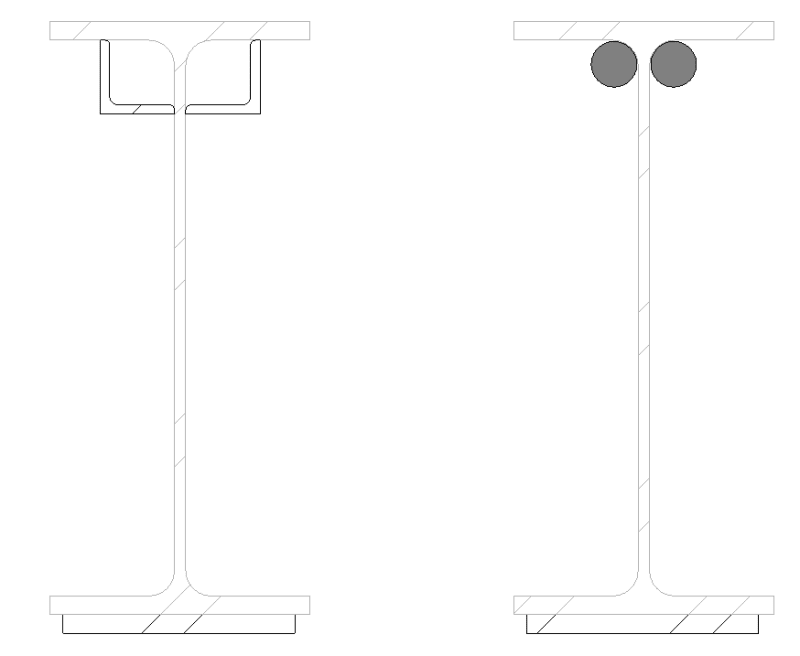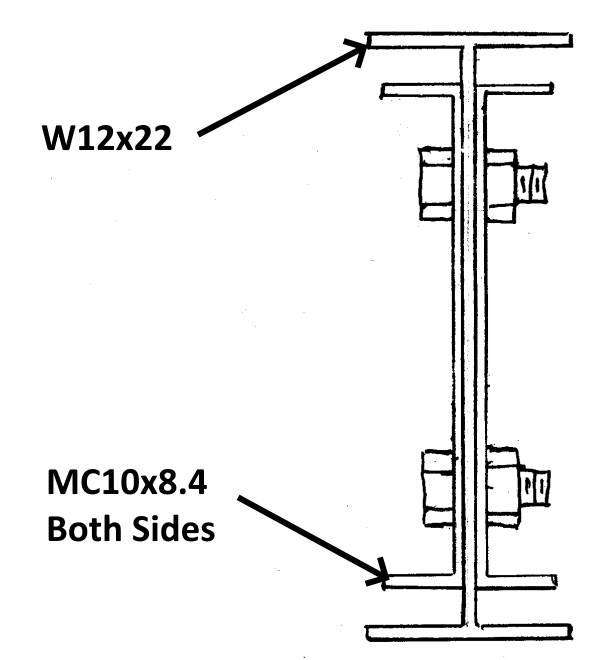Thank you for all the replies. I apologize if I don't reply to everyone individually, but please know that I am reading and considering all posts.
A little more context below. I'm trying to walk the line between being too vague and revealing too much info. I'm a structural engineer for an industrial facility, so I'm essentially the client. I want to keep some reasonable level of anonymity out of respect for my company.
I hired a firm to inspect the floor due to suspicions of heavy corrosion. They did a nice job and were able to UT all but a couple beams, the W12 in question being one of them. I spoke to the inspector again yesterday afternoon, and he confirmed that the web corrosion is localized to just a 12" width shown in the photo. I can fix that with a doubler plate. (There is an opening in the steel floor plate for washdown above that beam, so I believe that is how the localized corrosion happened...over 40-some years.) He also confirmed that the west top flange is thin/knifed down. Again, the interface between top flange and steel floor plate plus consistent moisture gave us these results. The rest of the beam is okay.
I like the bolted N.S./F.S. channel reinforcement; however, I do have a concern with the added shims being a new source for pack rust to rear its ugly head. This floor will continue to be wet. I'm a relatively new engineer, but I have seen case after case of pack rust issues in the industry that I work in.
I'm starting to consider the partial replacement/splice option. When construction on this floor begins, about 90% of the beams and 100% of the floor plate will be removed/replaced. On a windless day, I believe this W12 strut will see just self-weight. Normally it sees 15 psf dead + 100 psf live for 1.5 trib width, so about 9 k-ft service moment. The 20k axial is a bit of an estimate based on tension-only forces in the bracing. Perhaps we can cut and splice in a new W12 piece.
Another option I'm considering is to cut out just the top flange for its ~6 ft of damage (once loads are removed) and replace the the top flange with either double-angles, a channel, or a plate. See attachment for a double-angle section. I would fix the web with a doubler plate. Any thoughts on this? I'd like to stick to a partial-length repair or splice; otherwise, I will probably replace the whole strut if I'm looking at full-length reinforcement. (P.S. we have an in-house fabrication shop that does nice work. They can handle fairly intricate steel details. As far as cost, I factor in outside inspection and engineering, construction labor, and materials. If we do our own fabrication, shop labor is null.)
Again, thank you for the commentary. This gets me thinking about different options I hadn't considered.


